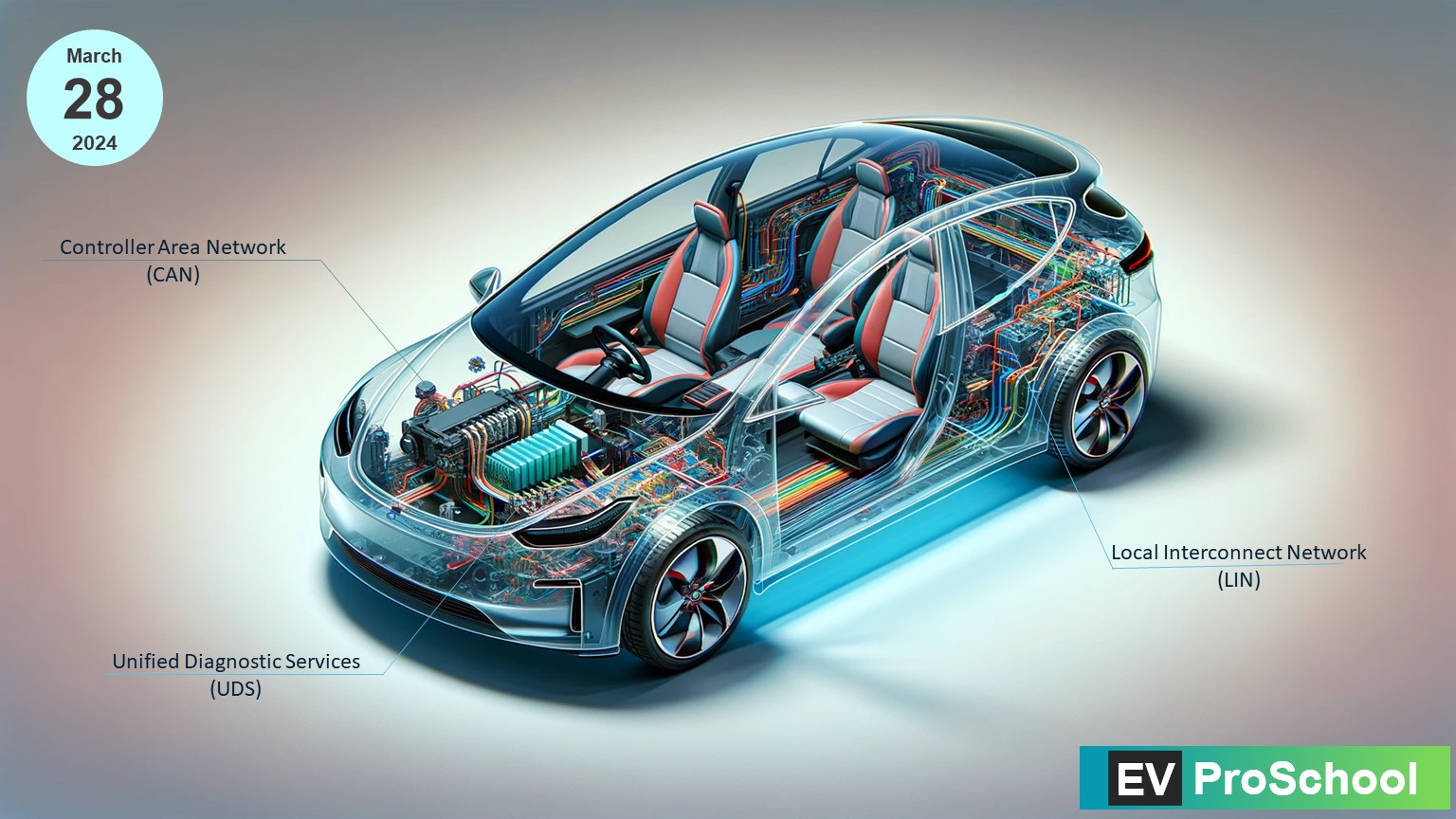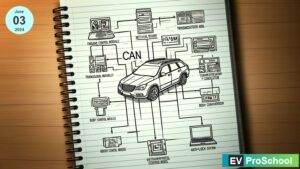In the automotive industry, the seamless interaction between numerous electronic control units (ECUs) is vital for the vehicle’s overall performance and safety. This complex interplay is facilitated by specialized communication protocols, each designed to meet specific requirements of vehicle networking. Among these, Controller Area Network (CAN), Local Interconnect Network (LIN), and Unified Diagnostic Services (UDS) stand out for their unique roles and functionalities. This blog post delves into the details of these protocols and their applications in modern vehicles.
Controller Area Network (CAN)
Developed in the 1980s by Bosch, CAN was designed to enable microcontrollers and devices to communicate with each other within a vehicle without a central computer. It has since become one of the most widely used protocols in automotive and industrial applications.
How It Works
CAN is a multi-master, message-oriented protocol that allows multiple ECUs to communicate with each other over a two-wire bus without requiring a central controller. It uses a method called non-destructive bitwise arbitration to control access to the bus, ensuring that the message with the highest priority (lowest identifier value) is transmitted first.
Applications
- Powertrain Control: CAN is extensively used for connecting engine control units, transmission control units, and other powertrain components.
- Chassis Management: It handles communications for systems like anti-lock braking systems (ABS) and electronic stability control (ESC).
- Vehicle Body Control: CAN is used for lighting, door control, climate control, and other body electronics.
Local Interconnect Network (LIN)
As a complement to CAN, LIN is a cost-effective, low-speed serial communication protocol used for connecting intelligent sensors and actuaries where bandwidth and versatility are not critical.
How It Works
LIN is a single-master, multiple-slave protocol. The master node controls the communication schedule, while slave nodes respond to the master’s requests. It operates on a single wire, significantly reducing wiring costs and complexity.
Applications
- Sensor Integration: LIN connects non-critical sensors like rain sensors, ambient light sensors, and temperature sensors to the main network.
- Actuator Control: It is used for controlling simple actuators within the vehicle, such as window motors and mirror adjusters.
Unified Diagnostic Services (UDS)
UDS is a diagnostic communication protocol in the automotive industry, defined by the international standard ISO 14229. It is used for diagnostics, configuration, and software updates of vehicle ECUs.
How It Works
UDS operates over networks like CAN or Ethernet and provides a standardized service-oriented architecture for diagnostic services. It defines a wide range of services, including reading and clearing error memory, programming, and vehicle identification.
Applications
- Diagnostics and Troubleshooting: UDS enables the diagnosis of vehicle issues and the clearing of diagnostic trouble codes (DTCs).
- ECU Configuration and Programming: It allows for the configuration of ECUs and the updating of their software, enhancing vehicle performance and adding new features.
Conclusion
The automotive industry’s evolution toward more sophisticated and interconnected systems has underscored the importance of efficient communication protocols like CAN, LIN, and UDS. By understanding their distinct functionalities and applications, automotive engineers and technicians can leverage these protocols to enhance vehicle performance, safety, and convenience. As vehicles continue to evolve into complex electronic ecosystems, the role of these communication protocols will only grow, paving the way for innovations in automotive technology.

